By Richard Phillips
When you were making your list of new native plants to add to your yard this past spring, I bet it contained all forbs with no shrubs or trees. Everyone wants to add more beautiful flowers! This article is to encourage you to add shrubs to your yard this year.
You might wonder, “Why would someone want to add a homely shrub to their yard?” My personal belief is that shrubs have an inherent beauty without the flashy colors of a forb. My main motivation, though, is to provide more food for birds, insects and other pollinators, whose populations have precipitously declined in the last few decades.
As we learned from Doug Tallamy, in his book Nature’s Best Hope, local native insects feed and breed on native plants. They have evolved side by side over eons and the insects have overcome the chemical toxins produced by their host plants; they can’t feed on non-native plants because they are not adapted to them. Tallamy and his colleagues researched data on native plants in each county of the United States and determined how many different insect species use those plants as a host.
This information is available on the National Wildlife and Audubon websites, where you can enter your zip code and it will provide a list of native plants (trees, grasses, forbs, shrubs) for that area, and the number of insect species that use each plant as a host.
The book goes on to explain that the more insects a plant hosts, the more caterpillars it produces. Birds need to collect thousands of caterpillars to feed their chicks (the preferred food for chicks); without which the chicks will not survive and the bird population will decline. You know the words of John Muir, “When one tugs at a single thing in nature, he finds it attached to the rest of the world.”
Well, it turns out that trees and shrubs host a lot more insects than forbs do! For example, Gambel oak trees are host to an astounding 221 insects, while chokecherry shrubs host 261 insect species. Some of the most attractive forbs for insects are sunflowers and goldenrods, which serve as hosts to only 69 and 79 insects respectively. The conclusion is that if you want to help increase bird and insect populations, plant more trees and shrubs!
Generally speaking, shrubs are also easier to plant. You don’t need to worry about many of the things you typically worry about when planting a forb or flower bed. (When does the forb bloom? Which flowers should I plant next to it? What color are the blossoms? How do I keep the weeds out of the bed?) Shrubs can easily be planted along a fence row, out of the way and without having to ask yourself too many questions.
There are dozens of native Colorado shrubs to choose from, as well as good resources that list them. One excellent source, in a brief format, is the Colorado State University Extension Service Fact Sheet, Native Shrubs for Colorado Landscapes – 7.422.
Here are my four favorite shrubs for the yard:
Chokecherry (Prunus virginiana melancarpa)
Chokecherry grows in a tall, cylindrical or vase-like shape with rich foliage. In the spring it is covered with clusters of blossoms, which turn into berries that the birds love. There is one in my yard that stands by itself at the corner of the lot and is over ten feet tall and nearly as wide. On a recent trip to Steamboat Springs, lots of chokecherry shrubs loaded with blooms were visible along the dirt roads through Routt National Forest!
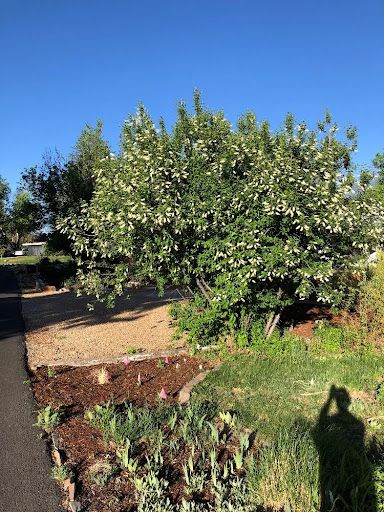

Mountain mahogany (Cercocarpus montanus) & Curl-leaf mountain mahogany (Cercocarpus ledifolius)
Mountain mahogany is the tough shrub you find growing in rugged dry spots at the edge of the short grass prairie and into the foothills. It doesn’t have dense foliage; but has an attractive, small, ribbed leaf. It is known for the characteristic corkscrew wing attached to the seed.
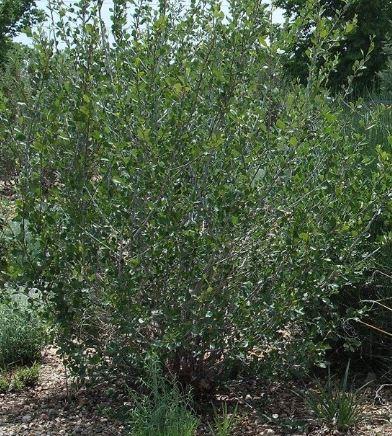
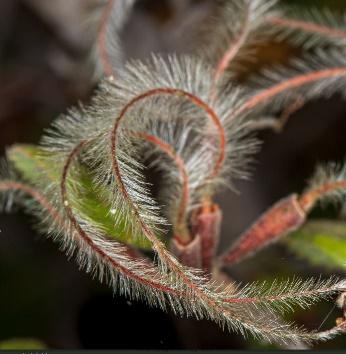
Serviceberry (Amelanchier alnifolia)
Serviceberry is a small to medium-sized shrub that is one of the first to bloom in spring. Small white flowers turn into red fruits that attract birds. Rumor has it that it got its name from being used for decoration in the funeral services of people who died in the winter and couldn’t be buried until the ground thawed in the spring.
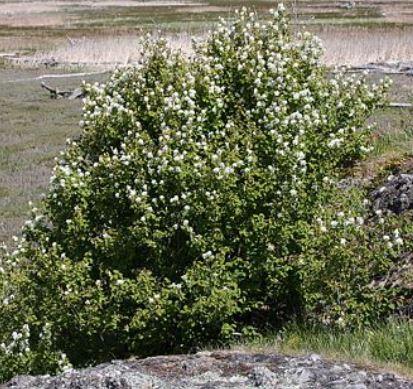

Gambel oak (Quercus gambelli)
Gambel oaks have medium-sized leaves with the typical lobed leaf pattern of oak trees. While Gamel oaks are “technically” trees, they can grow as a single trunk or with multiple trunks like a shrub. I think of them more as a shrub or a cluster of small trees, like you see them at Roxborough State Park. The best way to grow them as a shrub is to select one in a pot at the nursery with several trunks. You can also convert a single-trunk tree into a shrub pattern by trimming off the leader so that it branches outward.
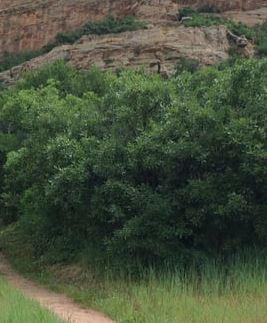
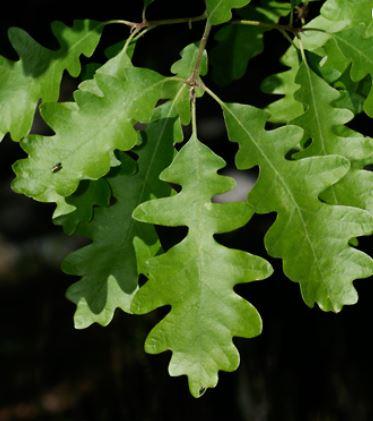
All four of these shrubs are perfectly adapted to our local soils and climate. After the first year or year and a half to get started, they will not need any supplemental watering. You can buy these and other native shrubs from nurseries specializing in native plants such as Harlequins Gardens in Boulder or Colorado Native Plant Nursery near Greeley. Of course, a limited selection is available from some of the larger local nurseries which don’t specialize in native plants. Call them for more information.
Another option, which is more fun, but more time consuming, is to start your own shrubs from seed. You can collect your own seeds from the field or buy them from suppliers such as Western Native Seeds in Coaldale. The easiest thing to do is put the seeds in 2.5” pots and leave them outside through the winter to go through the cold stratification process. Germination of these plants in my experience is tricky, so I recommend planting at least 10 pots, each with several seeds, and if you’re lucky you may get 3-5 plants germinating in the spring. It’s probably best to keep them potted for a year before planting in your yard.

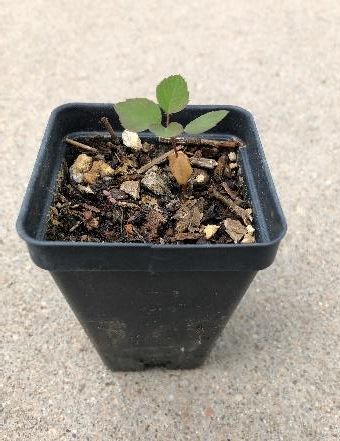
Hopefully, this article has provided enough information to motivate you to dig a hole in your yard and plant a shrub. Nature needs our help and this is a small yet literally ‘bigger’ way to assist!
Curious to learn more about transforming your garden into a habitat with Colorado native wildflowers, grasses, shrubs, and trees? Check out our native gardening toolkit, register for an upcoming event, subscribe to our newsletter, and/or become a member – if you’re not one already!
